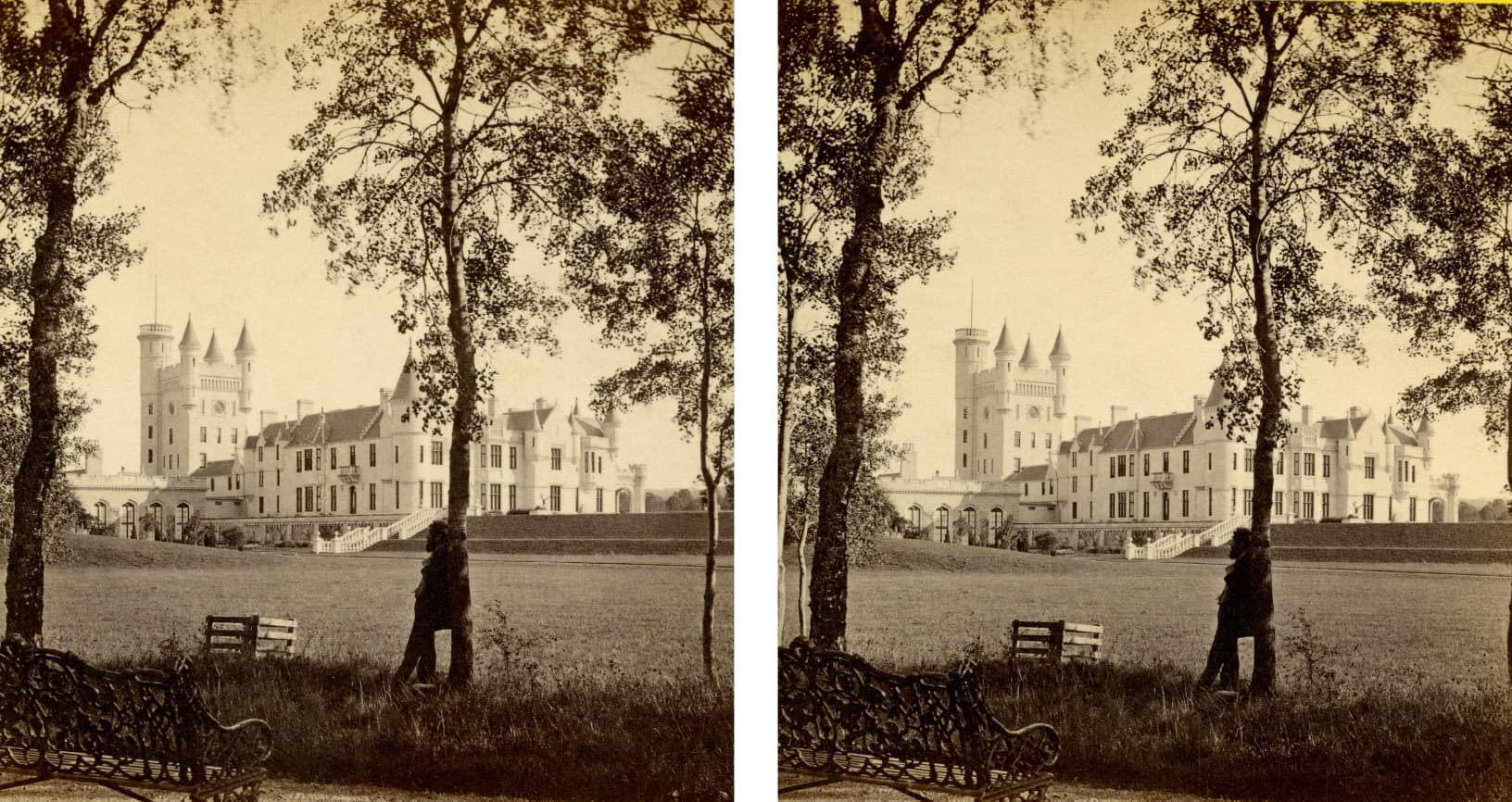Brian’s London Stereoscopic Company has recently republished a book on the Scottish stereoscopic photographer George Washington Wilson, written by leading photographic historian, Professor Roger Taylor (no relation). Washington Wilson (1823-93) became the toast of Victorian society with his innovative landscape photography and was hired to work for Queen Victoria. We caught up with Brian and Professor Taylor for a chat.
Brian, when did you first become aware of George Washington Wilson?
Hmm, it must have been about 40 years ago, as I have been collecting stereoscopic cards from quite a young age. Washington Wilson’s cards always stood out: they had a lovely cardboard back, with beautiful sepia prints pasted on top. They are always in wonderful condition as he got his processes so perfect, so they don’t fade or get messed up with age. It wasn’t until I met Roger that I began to understand what Washington Wilson means in terms of British photographic history, however.

So how do you meet Professor Taylor?
We met at a museum, at a celebration of a 150 years of British photography, and we both bemoaned the fact there were no stereoscopic images there at all. It’s really been sidelined. Roger is my mentor and a good friend, so Roger and I are on a crusade to let people know that 3D photography is alive and well!
Professor Taylor, Washington Wilson is is known as a great innovator in stereoscopic photography, can you summarise some of these innovations?
One of the things he did was to incorporate the sky and the ground in one single image. He introduced scenery that had water in the foreground, at sunset, so there was red sky, with lots of clouds reflected in the water, and he could balance everything up and point his camera directly at the sun – which was quite an innovation around 1858/9. He also took very short exposures. With the collodion process of those days you had to make exposures of several seconds. He managed to get it down to about an eighth of a second, so he was able to take street scenes which looked realistic. Other photographers soon wanted to follow this example.

Does any of his gear survive?
Sadly not, but we know the kinds of camera he used. Dallmeyer, a leading manufacturer of stereoscopic cameras, made a customised model for him around 1862
What are your favourite Washington Wilson images?
Professor Taylor: For me, it is his image of Princess St in Edinburgh, on a busy day, with carriages going by. It was the first glimpse of a truthful live representation of a city scene. Before that it was all posed long exposures, so the image pointed the way forward.
Brian May: For me it’s his image of Lake Katrine, composed so you feel like you are on the bank seeing into the distance, seeing the island on the lake. Oops I should have said Loch Katrine! My mother was Scottish, she would kill me!

Professor Taylor: Indeed, that photo was very popular with the public, and there are 60 different versions in the Aberdeen archive. He kept returning to that scene. He also shot a very famous portrait of Queen Victoria on a pony, which became one of the most iconic images of the Queen as a widow, following the death of Prince Albert. He put it out as a carte de visite, and sold 120,000 copies.

Do you hope this book will go some way to restore George Washington Wilson’s reputation?
Brian May: We hope so. There has been a sort of stigma associated with stereoscopic photography, a kind of snobbish attitude towards it. For me, this is THE most evocative portrayal of life as it was in Scotland. It’s much more real than flat photographs.
Professor Taylor: If you view stereoscopic images with a viewer, such as the Owl viewer which Brian developed, it fills the mental space in your head. It’s a bit like watching iMax movies – an extraordinarily immersive experience compared to a print.
George Washington Wilson: Artist and Photographer, by Professor Roger Taylor, Intro by Brian May, The London Stereoscopic Company, is available from all good booksellers now for £30








